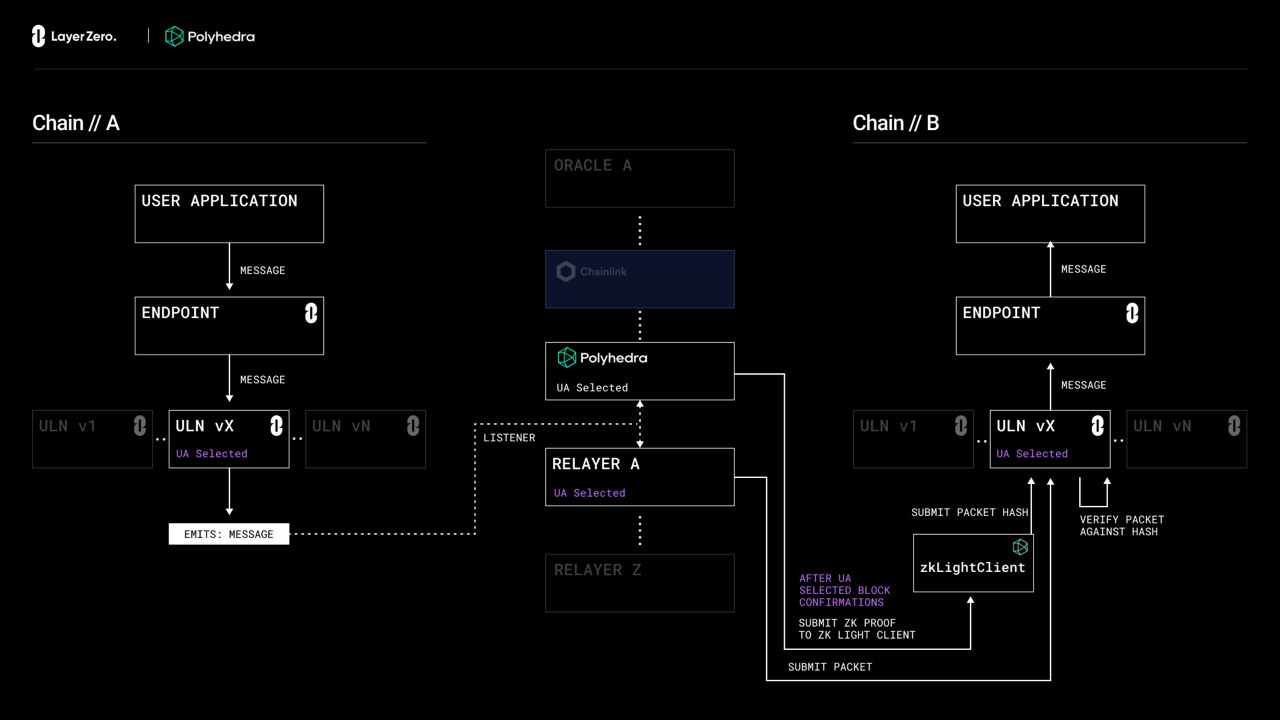ZkLightClient on LayerZero
Integrating Polyhedra zkLightClient technology into LayerZero
LayerZero is an omnichain interoperability protocol that enables cross-chain messaging. Applications built using blockchain technology (decentralized applications) can use the LayerZero protocol to connect to 30+ supported blockchains seamlessly. This allows dApp users to interact securely and efficiently with assets across chains.
Polyhedra's zkLightClient technology is fully integrated with LayerZero's messaging protocol, so application developers can use zero-knowledge-proof technology without barriers. Developers can easily build cross-chain applications on top of LayerZero through its extensive developer tooling and community support.

LayerZero's ULNv2 validation library relies on two parties, the Oracle and Relayer, to transfer messages between on-chain endpoints. When LayerZero sends a message from chain A to chain B, the message is routed through the endpoint on chain A to the ULNv2 validation library. The ULNv2 library notifies the Oracle and Relayer of the message and its destination chain. The Oracle forwards the packet hash to the endpoint on chain B, and the Relayer submits the packet to be verified on-chain against the hash and delivers the message.
On-chain light clients allow for the source chain's validator set to attest to something that occurred on their chain to a destination chain. In conjunction with other libraries, light clients add a layer of security on top of the LayerZero messaging protocol. On-chain transaction verification has been cost-prohibitive to the tune of $50m-$100m/day per pair-wise chain connected to Ethereum due to the presence of extensive transaction logs, which are necessary for the proof but not for the application itself.
Polyhedra's zkLightClient technology, built on LayerZero, harnesses the compression of ZKP technology and reduces the on-chain verification tremendously with lower latency by using efficient ZKP protocols. In addition, multiple transaction verifications can be batched into a single zero-knowledge proof.